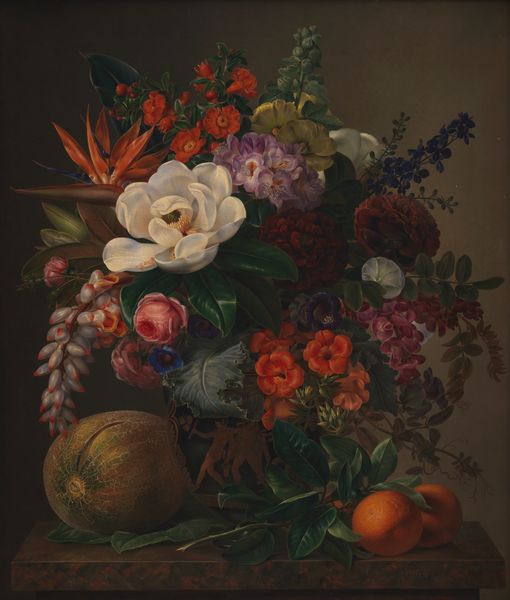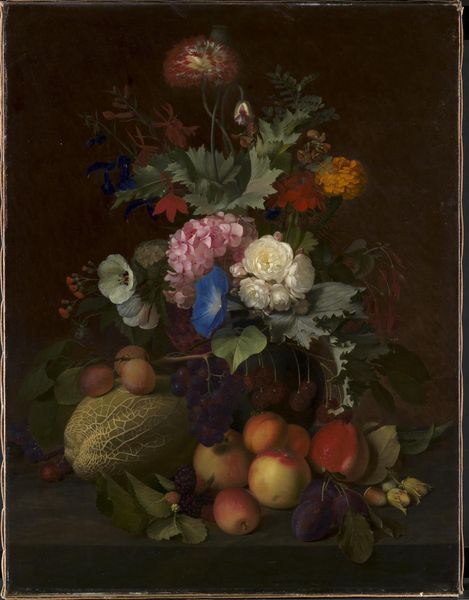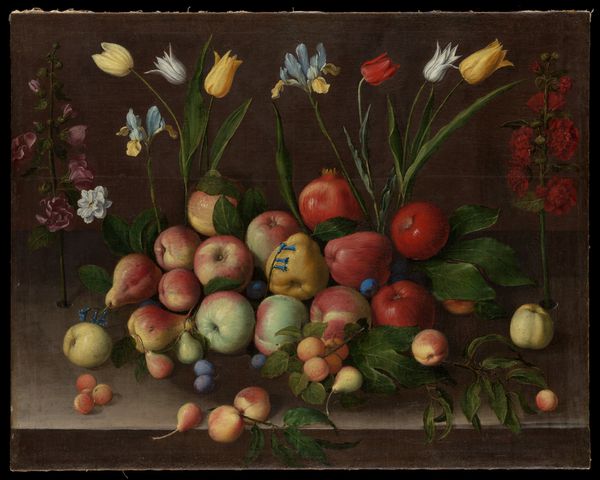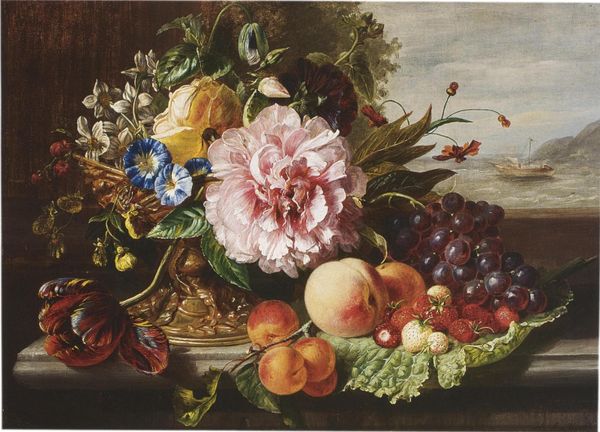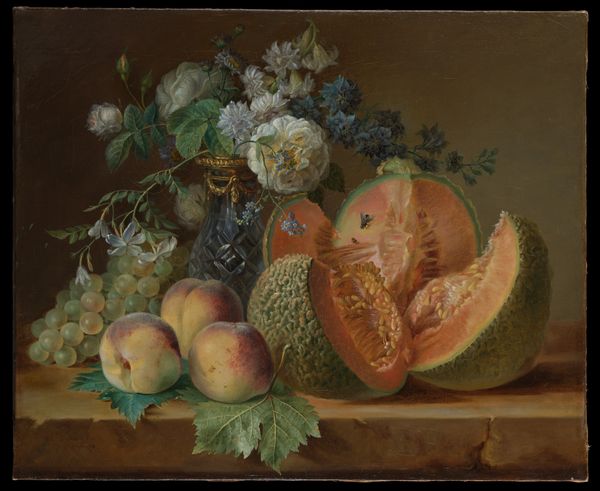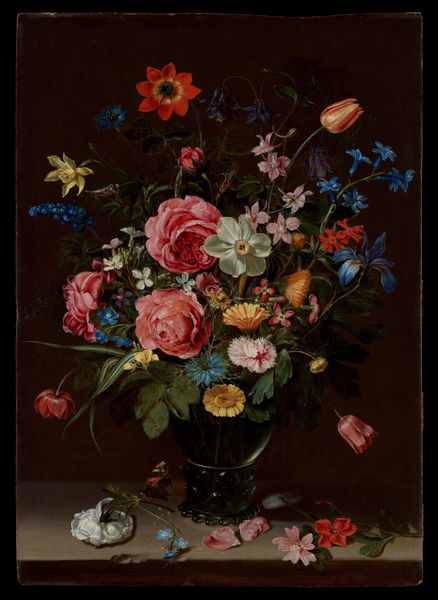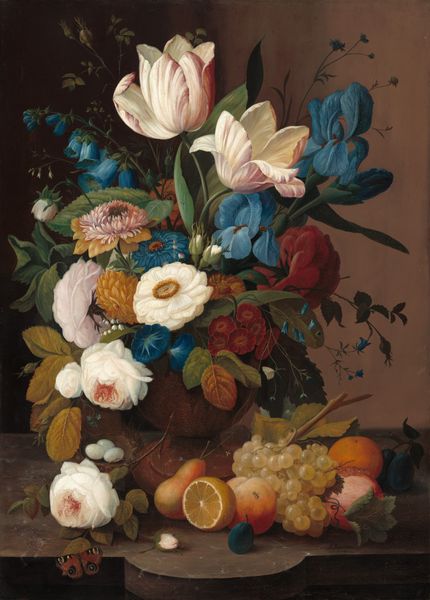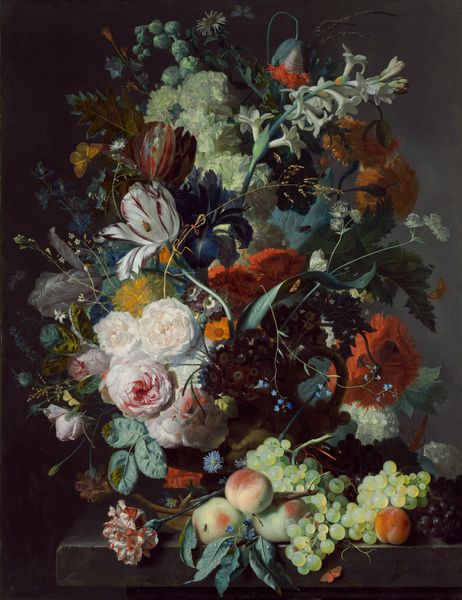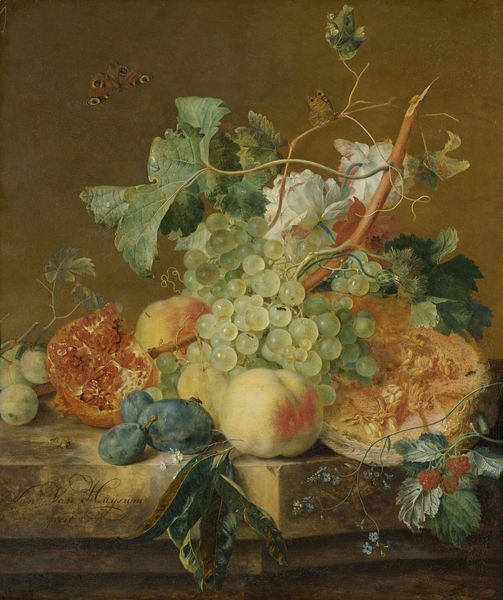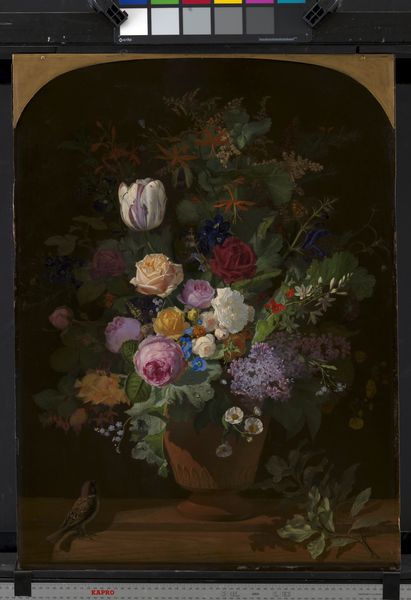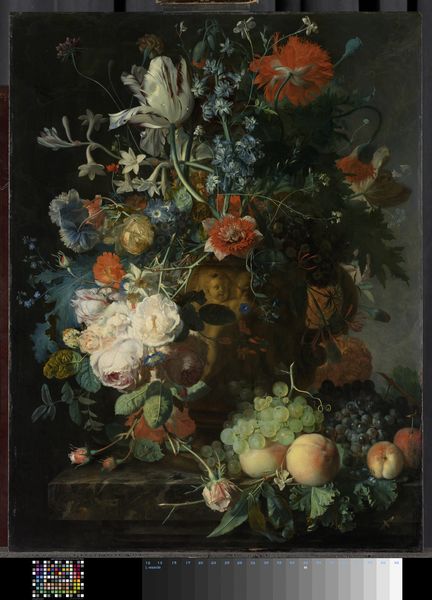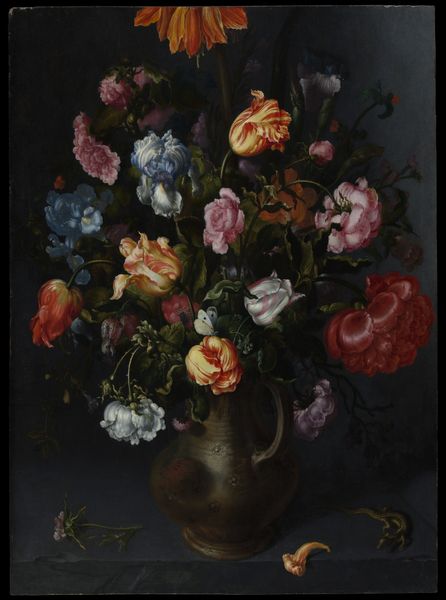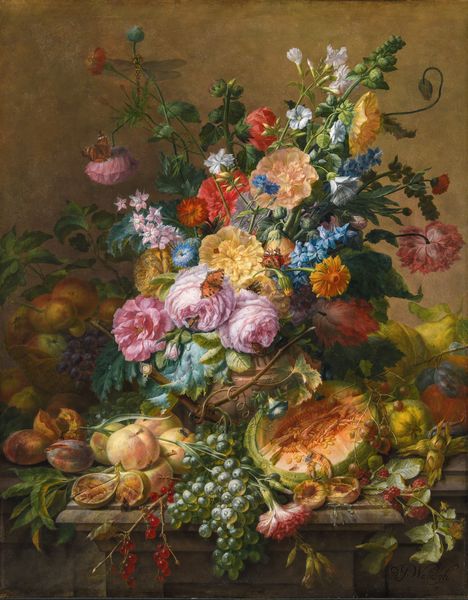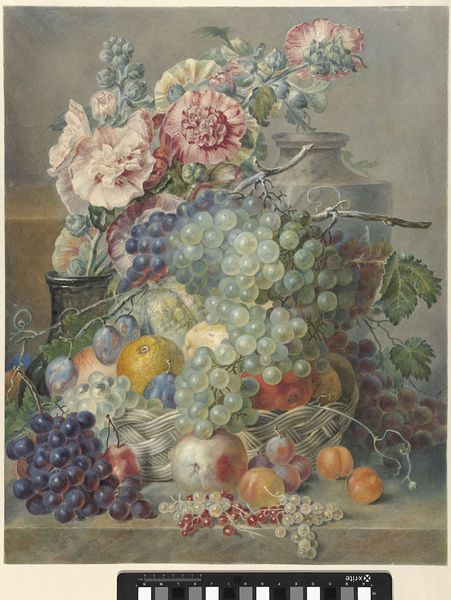
Dimensions: 40 x 50 3/8 in. (101.6 x 128 cm)
Copyright: Public Domain
Curator: We’re standing before Severin Roesen’s "Still Life: Flowers and Fruit," created between 1850 and 1855. Roesen was a German-American painter known for these lush, abundant still lifes. Editor: My first impression is one of utter visual excess! The sheer quantity of blossoms and fruit, packed so tightly together, it's almost overwhelming. Curator: Precisely! Roesen's compositions are masterful in their organization of such a diverse range of forms. Note the precise detail in each element; look at how each petal has been individually rendered with an exceptional level of detail. Editor: Absolutely. And that precision lends itself to the market and values of the time; works like these spoke to an era defined by a burgeoning middle class that took great pleasure and pride in material possessions. This isn’t merely about observing nature, it's about possessing a bountiful display of nature's riches. Did Roesen have links with Horticultural societies or associations, at all? Curator: Although it is speculated that Roesen consulted horticultural guides, there's little concrete evidence. What interests me more is his strategic manipulation of space. Look closely—he employs an ambiguous perspective, blurring the line between foreground and background, intensifying the painting’s surface dynamism. Editor: I agree, though that ambiguous space also makes me question who the audience was for his paintings. Was this designed to evoke that sort of Gilded Age plenty to show guests or were they primarily meant to embody middle-class aspiration to a public eager to align with social conventions that prized idealized depictions of domestic happiness and prosperity? Curator: The painting reflects the artistic norms promoted and preferred within nineteenth-century art exhibitions in general, doesn't it? A very tangible translation of prosperity. In truth, his still life, from an iconographic approach, signifies a world full of beauty and wealth! Editor: Precisely. Reflecting the taste of the moment back onto the aspirational audience. That rather gives food for thought about how artworks shape or are shaped by socioeconomic circumstances. It feels pertinent when viewing pieces like this. Curator: Indeed. Severin Roesen certainly provides a great foundation for thinking of artworks as being intrinsic, complex negotiations with nature and cultural desires. Editor: It reminds us that the visual culture of any era has deeper implications. Let’s step along, and explore some more of this show!
Comments
No comments
Be the first to comment and join the conversation on the ultimate creative platform.
